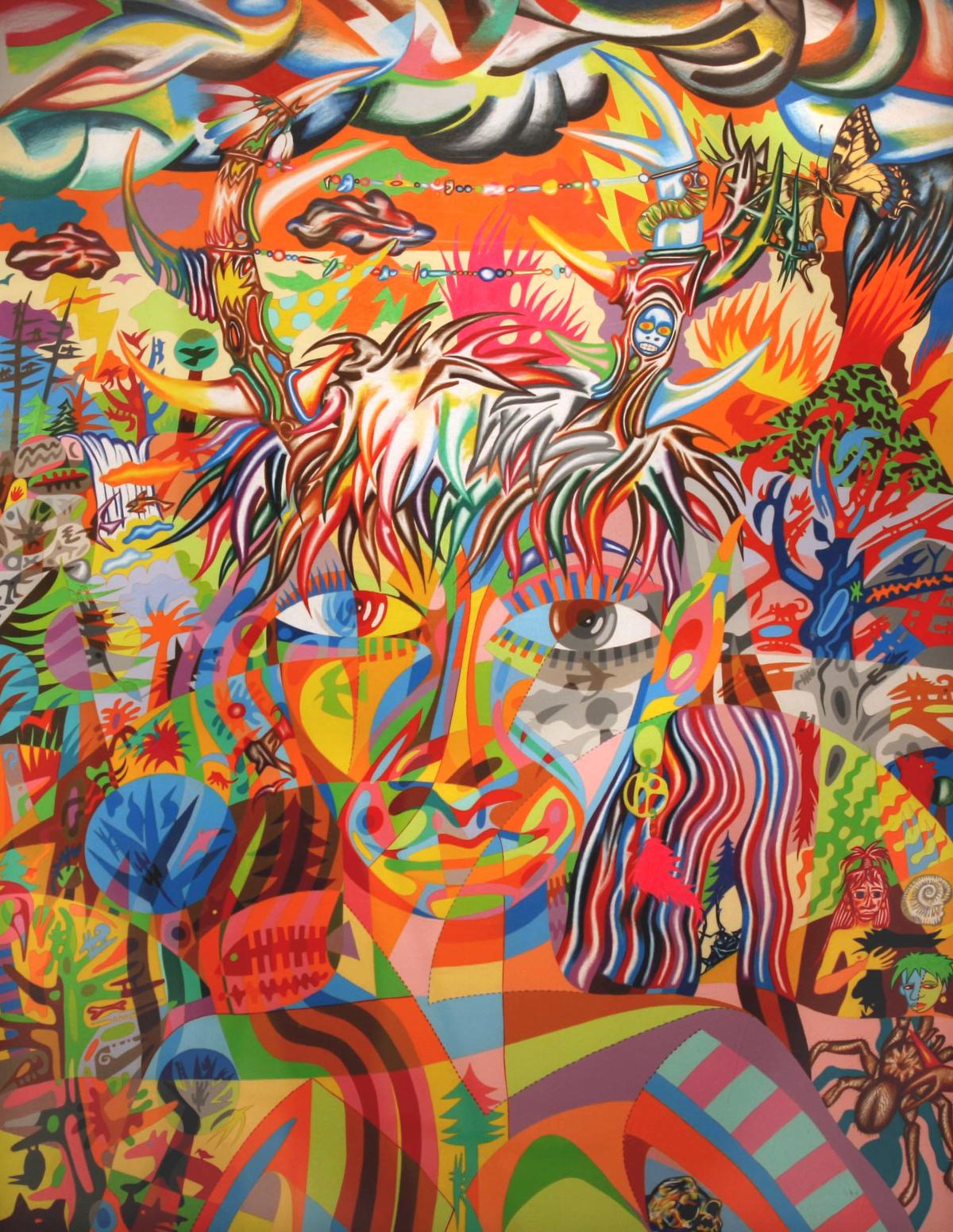WHAT: Drawings by Frank Big Bear:
WHERE: Tweed Museum of Art, University of Minnesota Duluth
WHEN: September 30, 2008 – March 22, 2009
Opening Reception, Sunday, October 5, 2008, 2-4 pm
The Tweed Museum of Art is pleased to announce a major new exhibition featuring the drawings of artist Frank Big Bear. A resident of Minneapolis since 1968, Big Bear was born and raised on Minnesota’s White Earth Reservation. He studied briefly with the legendary Ojibwe painter George Morrison at the University of Minnesota, but is considered to be a self-taught artist, relying on his dreams, intuitions, and on influences from his own study of art history and literature. Big Bear’s art has a powerful energy all its own, but evident in it are the space- and time-fracturing effects of Cubism and Surrealism. Fritz Scholder’s socio-political stances, and George Morrison’s abstracted landscape designs, also influence his drawings. Frank Big Bear’s art has achieved cult status among a younger generation of artists, paying homage to traditional Ojibwe culture, a contemporary search for spiritual meaning, and urban culture as well.
“Big Bear’s natural reserve keeps him from any phony pretense toward healing magic or cryptic wisdom. Answers come not from quick self-help fixes, but from patient looking into life’s mystery,” stated Doug Hanson in a 2006 Minneapolis Star Tribune review.
The exhibition begins with small works from the early 1980s, when Big Bear started working with color pencil, a medium he is closely identified with. His early works focus on personal themes, including his immediate family and his cultural identity with the White Earth Ojibwe. Floral Man, Self-Portrait, is a frontal view of the artist in a beaded vest, with a vine covering his face, like a botanical tattoo. Larger, more visually complex works from the 1990s have broader themes of social and political issues, reflected in titles like Stagnant Assimilation, and White Earth Pow-Wow. Big Bear’s recent works, often monumental in scale, combine American Indian spiritual themes, especially that of the shaman, warrior, and the attributes of various animals. Above all, the artist’s intensely colored drawings urge viewers to consider their images, environments, and personages from multiple points of view.
